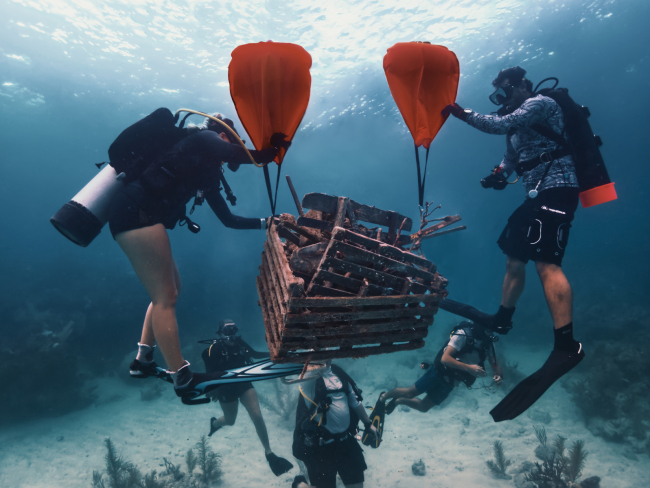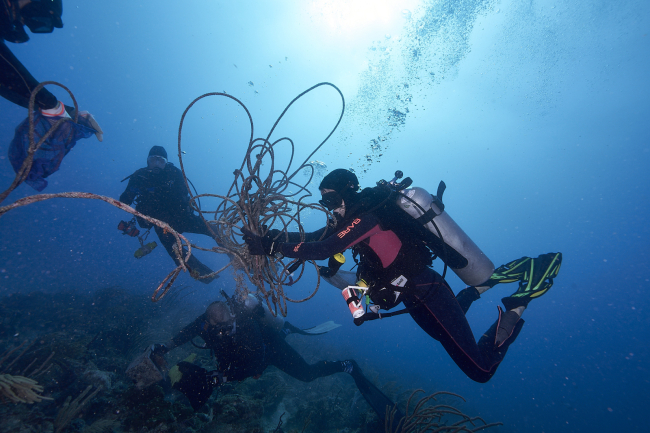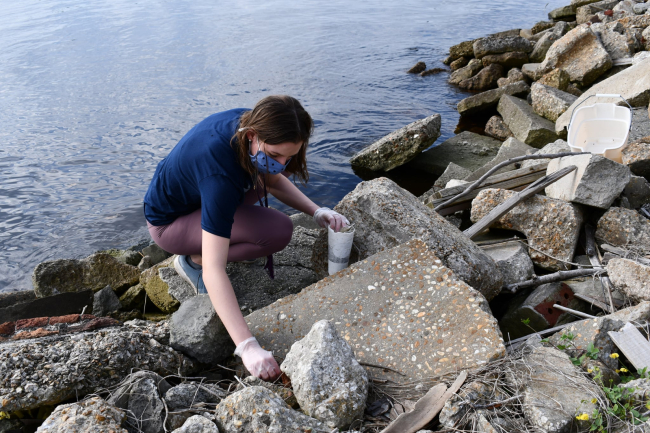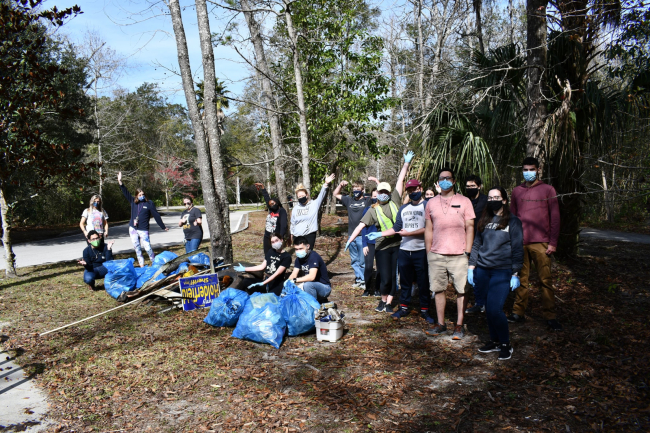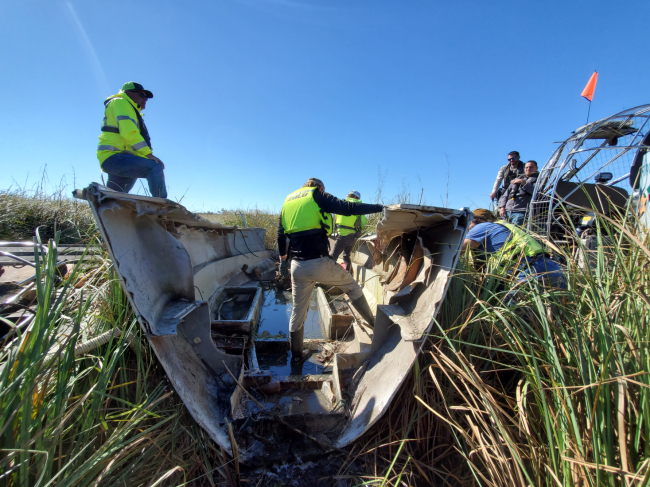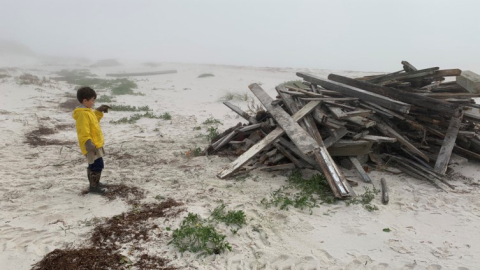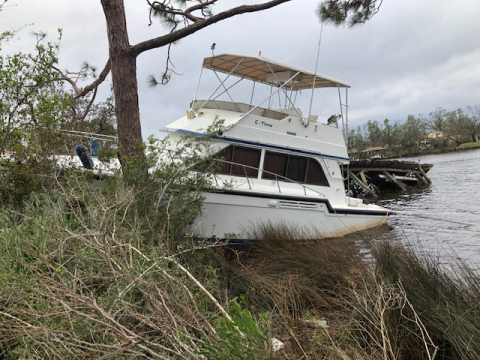Throughout the year, the NOAA Marine Debris Program will spotlight each region for an entire month. Keep an eye on our blog and social media to learn about exciting marine debris projects and initiatives throughout the country.
Florida, also known as the Sunshine State, is home to the only living barrier reef in the continental United States and over 650 miles of scenic coastlines. Unfortunately, underwater debris, such as lost traps and fishing gear, causes damage to these fragile ecosystems and impacts local fishing, tourism, and recreational industries. The NOAA Marine Debris Program (MDP) and our partners across the state are working on debris removal and prevention efforts to keep these important ecosystems healthy and free of debris.
The National Marine Sanctuary Foundation (NMSF), with the support of the MDP, is engaging Blue Star dive operators, dive professionals, recreational divers, and other local partners to clean and protect reefs through their Goal: Clean Seas Florida Keys project. In 2021, almost 1,500 divers spent over one thousand hours removing 13,866 pounds of derelict fishing gear and other underwater debris (approximately the weight of three rhinoceros) throughout the Florida Keys National Marine Sanctuary. By engaging the local community in cleanup efforts, NMSF aims to prevent debris from reaccumulating on the reefs.
On the Gulf coast of Florida, Eckerd College is teaming up with the University of North Florida in Jacksonville to reduce single-use plastic consumption by undergraduates with the ultimate goal of reducing the amount of single-use plastics ending up in our waters. The project, Toward Sustainable Campuses, is expanding the efforts of a previous MDP grant to increase student and college administration commitment to long-term sustainable behaviors. Students are introduced to the problem of plastics and learn potential solutions through education and outreach initiatives, participating in campus and community cleanups, and attending workshops to create their own alternative reusable items, such as beeswax wraps. Additionally, students are participating in week-long Plastic Reduction Challenges where they track their plastic consumption to help further understanding of single-use plastic on college campuses and inform future intervention efforts.
While Florida may be a hotspot for tourism, it is still susceptible to the impact of high winds, heavy rains, and powerful storm surges from hurricanes. These storms are known to generate large amounts of marine debris, especially derelict vessels. Florida Fish and Wildlife Conservation Commission and Florida Department of Environmental Protection, with disaster relief funding from the MDP, are leading ongoing efforts to remove debris remaining from Hurricane Irma across the state. In the panhandle of Florida, communities are also still recovering and cleaning up after Hurricane Michael with funding through the Hurricane Response Marine Debris Removal Fund, a partnership between the MDP and National Fish and Wildlife Foundation. Dog Island Conservation District has completed debris removal along four miles of beach and dunes that were severely impacted by damage from Hurricane Michael. The City of Mexico Beach completed an assessment of the amount of debris remaining along the City’s shoreline and has developed a plan for removal and disposal. Additionally, the University of Florida is removing and disposing of hurricane-caused vessel and structural debris negatively impacting coastal vegetation and adjacent uplands in the St. Andrew, St. Joseph, and Apalachicola Bay communities.
While the impacts of marine debris are a serious issue for Florida, the ongoing efforts of our dedicated partners provide hope that we can keep the Sunshine State free of debris. Stay tuned to our blog for highlights from projects in the Caribbean later this month!

